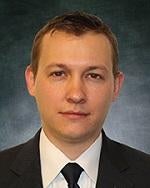Addressing the impact of patent prosecution arguments on claim construction, the US Court of Appeals for the Federal Circuit vacated the district court’s claim construction, finding that the district court’s application of the prosecution history disclaimer was overly broad. Technology Properties Ltd. v. Huawei Technologies Co., Ltd., Case Nos. 16-1306; -1307; -1309; -1310; -1311 (Fed. Cir., Mar. 3, 2017) (Moore, J).
Technology Properties’ patent is directed to a microprocessor having two independent clocks (oscillators): a variable frequency system clock connected to the central processing unit (CPU), and a fixed-frequency clock connected to the input/output (I/O) interface. A “variable” frequency clock can fluctuate based on external stressors such as temperature and voltage. By contrast, a fixed-frequency clock maintains a steady frequency regardless of the environment. The patent teaches that the variable-speed CPU clock is fabricated on the same silicon substrate as the CPU, which means that both the clock and the CPU react similarly to external stressors. In district court, the dispute focused on the appropriate construction of the phrase “an entire oscillator disposed upon said integrated circuit substrate.” Based largely on prosecution arguments made in connection with differentiating two references, Magar and Sheets, the district court construed this phrase to mean “an oscillator located entirely on the same semiconductor substrate as the central processing unit that does not require a control signal and whose frequency is not fixed by any external crystal.” After the parties stipulated to non-infringement, Technology Properties appealed.
At the Federal Circuit, the parties’ dispute focused on the above-emphasized portion of the district court’s construction. According to the appellees, the construction “whose frequency is not fixed by any external crystal” is mandated by the patentee’s disclaiming statements relating to the Magar reference, and the construction “that does not require a control signal” is required by disclaiming statements relating to Sheets. Prosecution disclaimer can arise from both claim amendments and arguments made to the US Patent and Trademark Office, as long as the disclaimer is “both clear and unmistakable to one of ordinary skill in the art.”
Technology Properties argued that the district court erred by limiting an “entire oscillator” to one “whose frequency is not fixed by any external crystal.” According to Technology Properties, the claimed invention is distinguishable from Magar for a different reason: Magar’s clock signal is generated off-chip, while the challenged claims generate a clock signal on-chip. But, as the Federal Circuit noted, during prosecution the patentee argued that Magar was distinguishable for two reasons: (1) it discloses a fixed-frequency crystal rather than a variable-frequency ring oscillator, and (2) it requires an external (off-chip) generator. According to the Federal Circuit, “[t]he question is what a person of ordinary skill would understand the patentee to have disclaimed during prosecution, not what a person of ordinary skill would think the patentee needed to disclaim during prosecution.” Here, the patentee likely disclaimed more than was necessary to overcome the examiner’s rejection. The scope of surrender is not limited to what is absolutely necessary to avoid a prior art reference, however; patentees may surrender more than necessary. Thus, the district court’s construction was correct in this respect.
Technology Properties also argued that the district court erred by limiting the claimed “oscillator” to one “that does not require a control signal.” The Federal Circuit agreed, finding that the district court erred by holding that the patentee disclaimed any use of a command signal and that the patentee only disclaimed a particular use of a command signal—using a command signal to change the clock frequency. Specifically, during prosecution, the patentee argued that Sheets was distinguishable from the challenged claims because Sheets requires a command input to change the clock speed, whereas the claims do not “rely upon [the] provision of frequency control information to an external clock” taught in Sheets because all claimed components were located on the same substrate. None of these statements disclaim an entire oscillator receiving a command input for any purpose. Every time the patentee mentioned a “control signal” or “command input,” it did so only in the context of using a command input to modify the frequency of the CPU clock. For these reasons, the Federal Circuit reversed the district court and held that the term is properly construed as one “that does not require a command input to change the clock frequency.”




 />i
/>i
